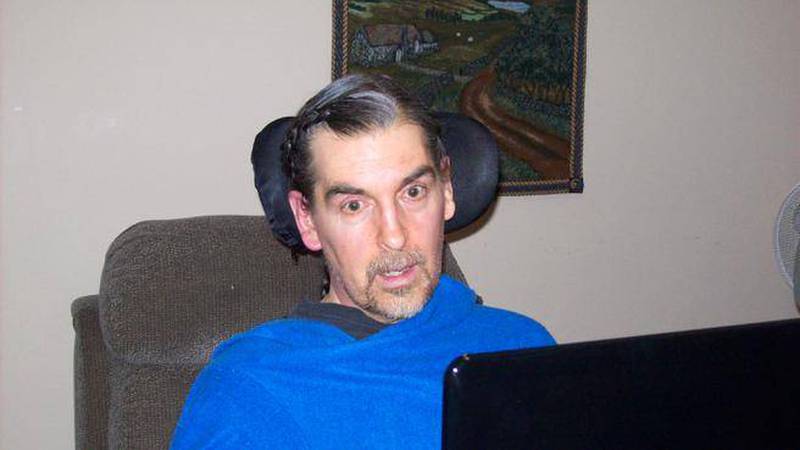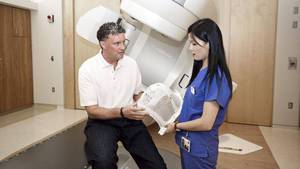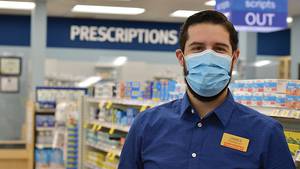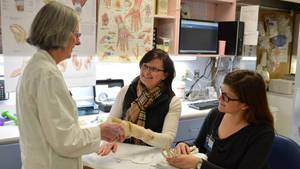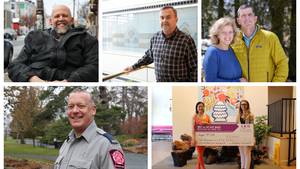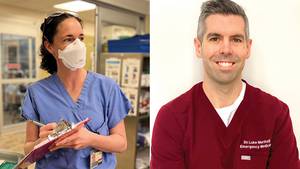Alayne MacDonald witnesses firsthand the power of technology to make life easier for those with disabilities. The seemingly impossible becomes possible.
Alayne is a speech language pathologist with Nova Scotia Hearing and Speech Centres. With clinics in over 24 communities across the province, including the QEII, the NSHSC is a provincial program of the Nova Scotia Department of Health and Wellness.
Alayne is part of a small assistive technology team at the QEII’s Nova Scotia Rehabilitation and Arthritis Centre, which assesses and develops technology plans, and finds communication means for people whose motor and speech skills have been affected by a neurological disease, such as ALS (amyotrophic lateral sclerosis).
“We work with each client to come up with a solution,” says Alayne. “It’s really about allowing them to be self-determining.”
For Robert William, assistive technology gives him a voice. Since being diagnosed with ALS a couple of years ago, Robert has increasingly lost much of his ability to speak and use his hands. Kim Parker, a rehabilitation engineer at the QEII, has worked with Robert as his disease progresses. Initially able to use his phone and iPad to communicate, Kim recently set Robert up with eye gaze technology and a knee switch. The new equipment allows him to access software on his computer by using eye movements and a simple motion of pressing his knees together.
“This technology has given Robert another option to communicate as it has become increasingly difficult for him to speak,” says Robert’s family. “It gives him a sense that he can still engage with us and his friends.”
Thanks to both the technology and the team, Robert spends hours each day online reading and being entertained. But most importantly, he maintains his ability to communicate and engage with family and friends as his disease progresses and his ability to speak diminishes.
“People aren’t just about voice. Now, it’s: I want to be able to text family members and get on Netflix,” says Cher Smith, a QEII occupational therapist. “It’s so meaningful, whatever that communication choice is.”
Working with both inpatients and outpatients, and their families, Alayne initially assesses a person’s communication needs and patterns. If they cannot use their hands, Cher assesses other body parts that may be used such as the simple movement of the jaw to activate a switch that is connected to a communication device. The team must often be creative to adapt to client needs, what is available on the market and what is affordable.
“With new advances in mainstream technology, such as tablets and smart phones, we’re making communication systems available to more people,” says Alayne.
Armed with knowledge of their communication needs, and their physical and cognitive abilities, Kim and Alayne then trial the devices. These products need to be easy for the clients to use while meeting their communication goals.
Once a communication program is selected, customized messages are added to the device. These typically are frequently-used messages such as common social phrases, specific care needs, terms of endearment with family. Having these programmed reduces the amount of effort required to communicate.
“It opens up communication and allows personalities to come through,” says Alayne.
Aside from having helpful messages, a message such as “I cannot speak, I use a device to communicate. Please wait a minute while I type,” provides helpful information to the listener.
Over the past few years, QEII Foundation donors have provided more than $130,000 for assistive technology. In addition, the team received funding from the Nova Scotia Hearing and Speech Foundation.
“We’re a small, but mighty team,” says Alayne. “The more you work together as a team, the more you learn from each other.”

